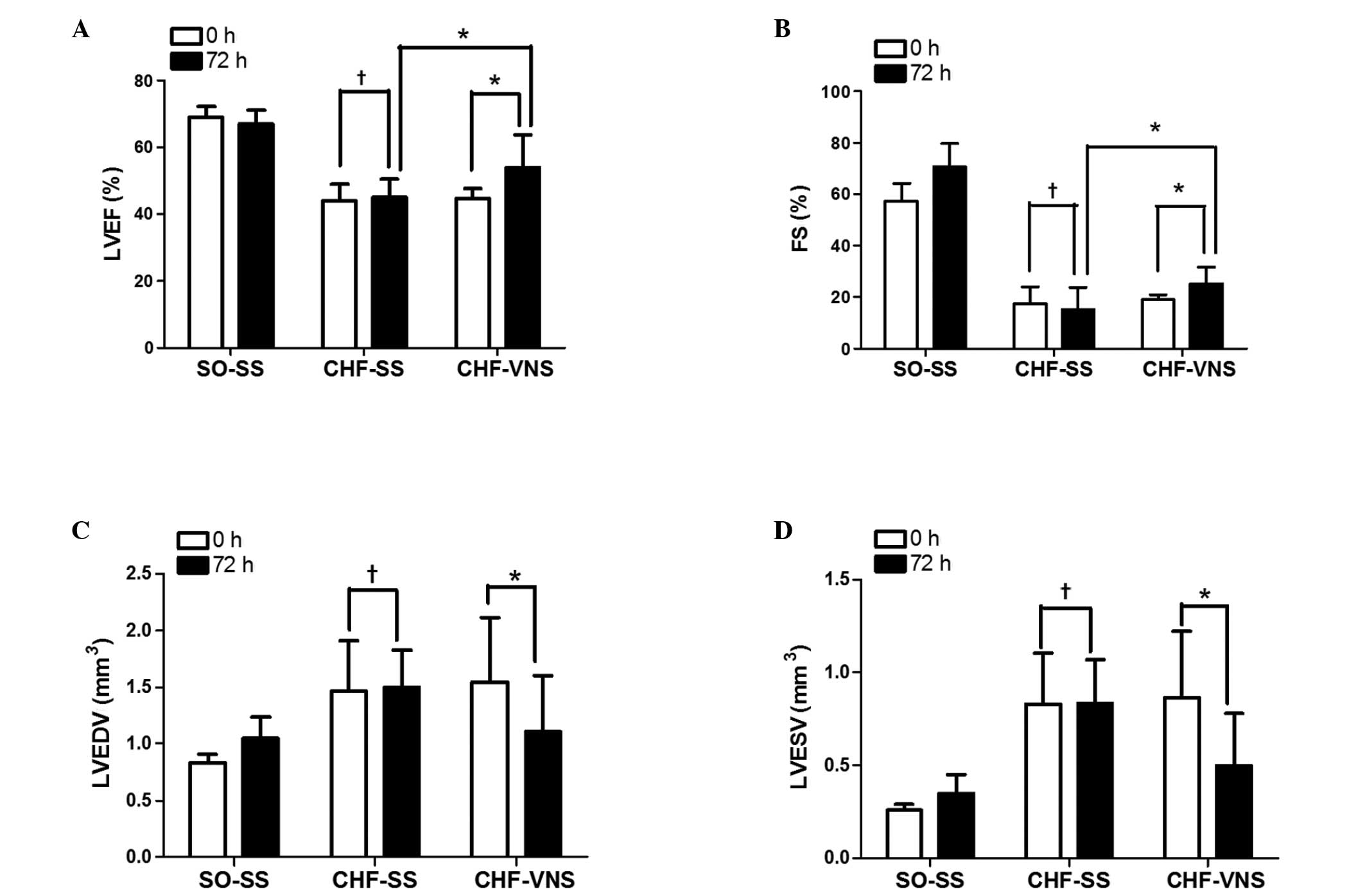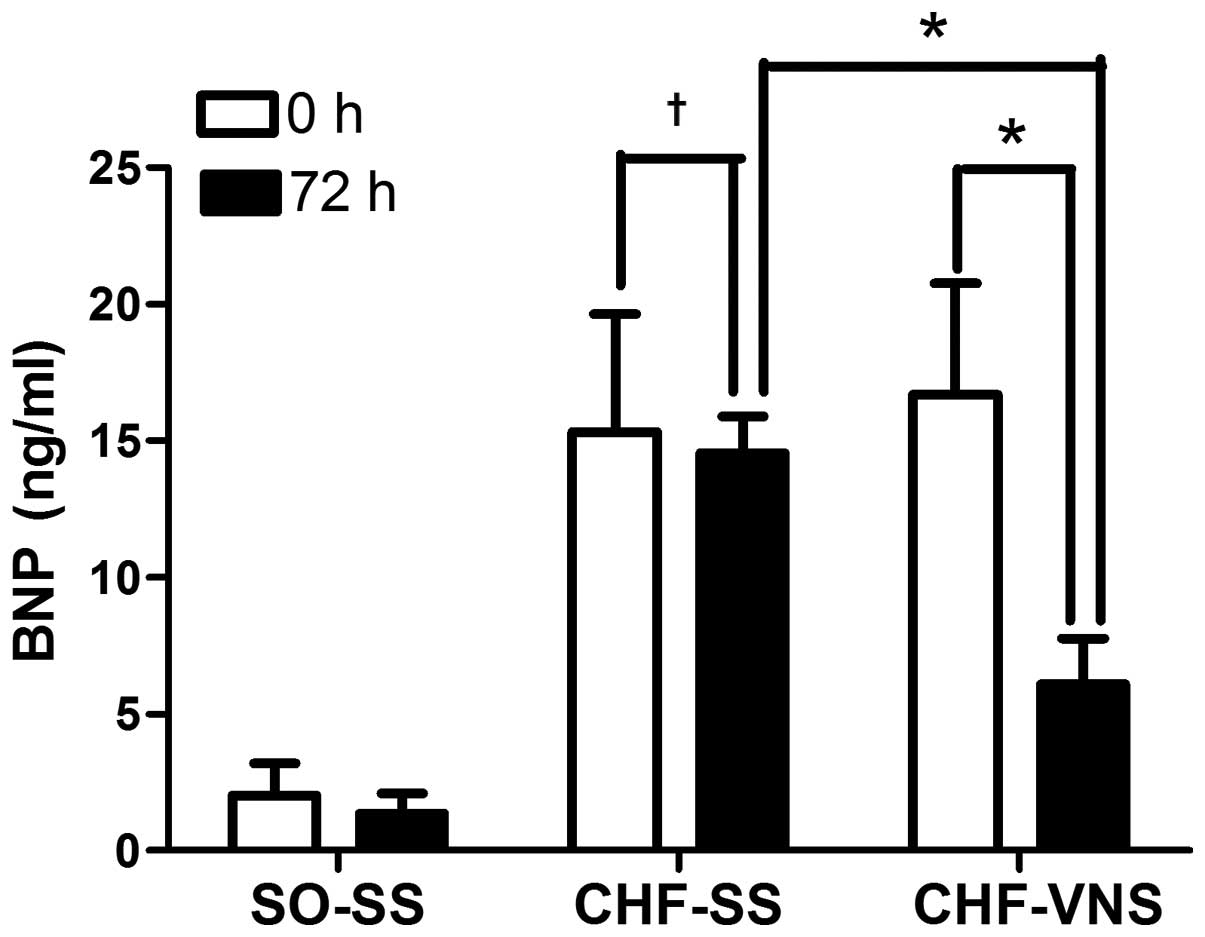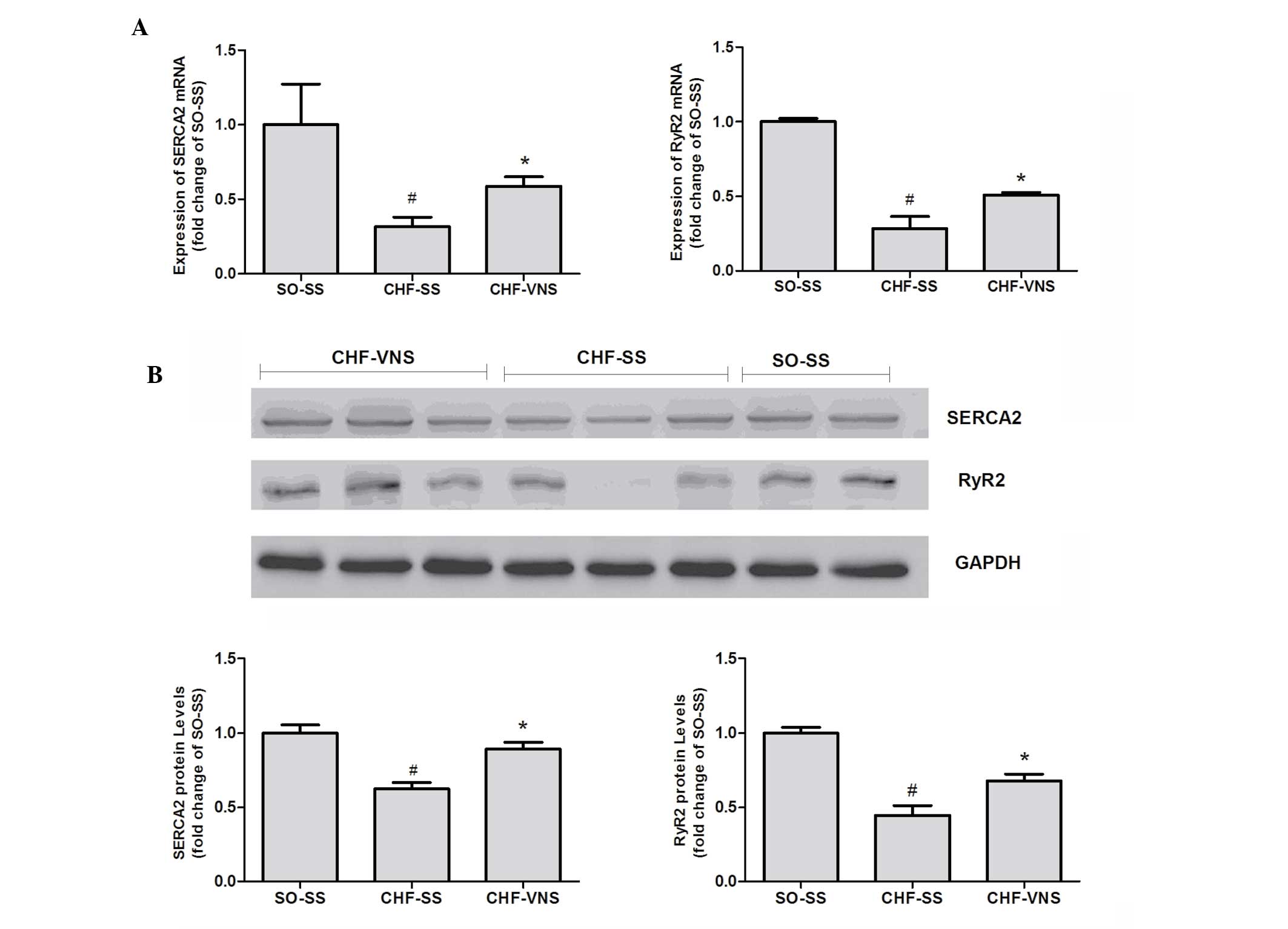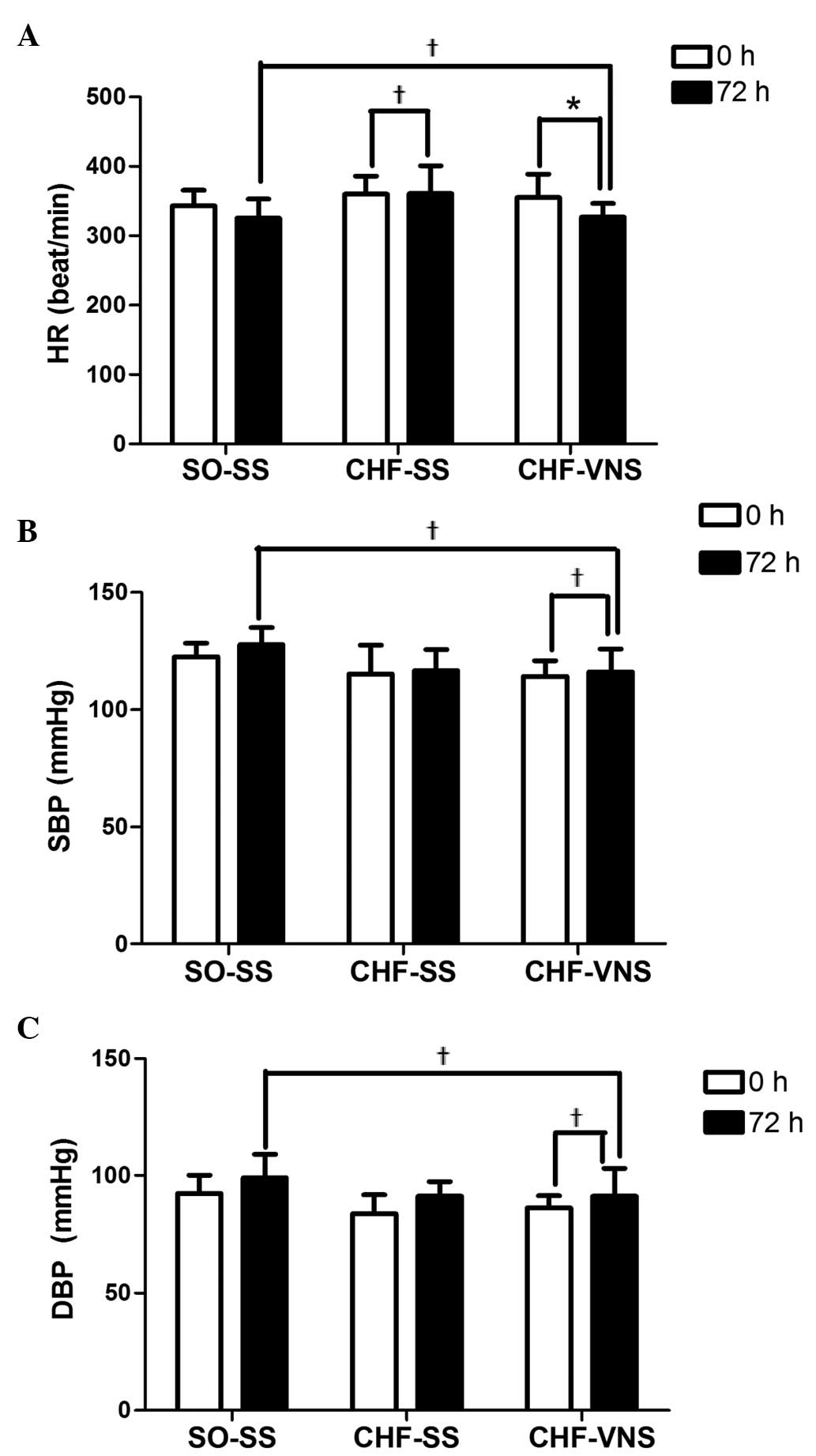|
1
|
Patel HC, Rosen SD, Lindsay A, Hayward C,
Lyon AR and di Mario C: Targeting the autonomic nervous system:
Measuring autonomic function and novel devices for heart failure
management. Int J Cardiol. 170:107–117. 2013. View Article : Google Scholar : PubMed/NCBI
|
|
2
|
Florea VG and Cohn JN: The autonomic
nervous system and heart failure. Circ Res. 114:1815–1826. 2014.
View Article : Google Scholar : PubMed/NCBI
|
|
3
|
Kishi T: Heart failure as an autonomic
nervous system dysfunction. J Cardiol. 59:117–122. 2012. View Article : Google Scholar : PubMed/NCBI
|
|
4
|
Kobayashi M, Massiello A, Karimov JH, Van
Wagoner DR and Fukamachi K: Cardiac autonomic nerve stimulation in
the treatment of heart failure. Ann Thorac Surg. 96:339–345. 2013.
View Article : Google Scholar : PubMed/NCBI
|
|
5
|
Lataro RM, Silva CA, Fazan R Jr, et al:
Increase in parasympathetic tone by pyridostigmine prevents
ventricular dysfunction during the onset of heart failure. Am J
Physiol Regul Integr Comp Physiol. 305:R908–916. 2013. View Article : Google Scholar : PubMed/NCBI
|
|
6
|
Dicarlo L, Libbus I, Amurthur B, Kenknight
BH and Anand IS: Autonomic regulation therapy for the improvement
of left ventricular function and heart failure symptoms: the
ANTHEM-HF study. J Cardiac Failure. 19:655–660. 2013. View Article : Google Scholar
|
|
7
|
Schwartz PJ: Vagal stimulation for heart
diseases: from animals to men. – An example of translational
cardiology. Circ J. 75:20–27. 2011. View Article : Google Scholar
|
|
8
|
Hauptman PJ, Schwartz PJ, Gold MR, et al:
Rationale and study design of the increase of vagal tone in heart
failure study: INOVATE-HF. Am Heart J. 163:954–962.e951. 2012.
View Article : Google Scholar : PubMed/NCBI
|
|
9
|
Hamann JJ, Ruble SB, Stolen C, et al:
Vagus nerve stimulation improves left ventricular function in a
canine model of chronic heart failure. Eur J Heart Failure.
15:1319–1326. 2013. View Article : Google Scholar
|
|
10
|
De Ferrari GM, Crijns HJ, Borggrefe M, et
al: Chronic vagus nerve stimulation: a new and promising
therapeutic approach for chronic heart failure. Eur Heart J.
32:847–855. 2011. View Article : Google Scholar
|
|
11
|
Li M, Zheng C, Sato T, Kawada T, Sugimachi
M and Sunagawa K: Vagal nerve stimulation markedly improves
long-term survival after chronic heart failure in rats.
Circulation. 109:120–124. 2004. View Article : Google Scholar
|
|
12
|
Schwartz PJ, De Ferrari GM, Sanzo A, et
al: Long term vagal stimulation in patients with advanced heart
failure: first experience in man. Eur J Heart Failure. 10:884–891.
2008. View Article : Google Scholar
|
|
13
|
Zhang Y, Popovic ZB, Kusunose K and
Mazgalev TN: Therapeutic effects of selective atrioventricular node
vagal stimulation in atrial fibrillation and heart failure. J
Cardiovasc Electrophysiol. 24:86–91. 2013. View Article : Google Scholar
|
|
14
|
Vagus nerve stimulation for treating
chronic heart failure A summary of ECRI Institute’s Health
Technology Forecast report. Managed care (Langhorne, Pa.).
22:44–45. 2013.
|
|
15
|
Schwartz PJ: Vagal stimulation for the
treatment of heart failure: a translational success story. Heart.
98:1687–1689. 2012. View Article : Google Scholar : PubMed/NCBI
|
|
16
|
Yao YY, Yin H, Shen B, Chao L and Chao J:
Tissue kallikrein and kinin infusion rescues failing myocardium
after myocardial infarction. J Cardiac Failure. 13:588–596. 2007.
View Article : Google Scholar
|
|
17
|
Sherrill CB, Marshall DJ, Moser MJ, Larsen
CA, Daudé-Snow L, Jurczyk S, Shapiro G and Prudent JR: Nucleic acid
analysis using an expanded genetic alphabet to quench fluorescence.
J Am Chem Soc. 126:4550–4556. 2004. View Article : Google Scholar : PubMed/NCBI
|
|
18
|
Schwartz PJ and De Ferrari GM:
Sympathetic-parasympathetic interaction in health and disease:
abnormalities and relevance in heart failure. Heart Failure Rev.
16:101–107. 2011. View Article : Google Scholar
|
|
19
|
Schoemaker RG, Saxena PR and Kalkman EA:
Low-dose aspirin improves in vivo hemodynamics in conscious,
chronically infarcted rats. Cardiovasc Res. 37:108–114. 1998.
View Article : Google Scholar : PubMed/NCBI
|
|
20
|
Giessler C, Dhein S, Pönicke K and Brodde
OE: Muscarinic receptors in the failing human heart. Eur J
Pharmacol. 375:197–202. 1999. View Article : Google Scholar : PubMed/NCBI
|
|
21
|
Livak KJ and Schmittgen TD: Analysis of
relative gene expression data using real-time quantitative PCR and
the 2(-Delta Delta C(T)). Method Methods. 25:402–408. 2001.
View Article : Google Scholar
|
|
22
|
Yoo PB, Hincapie JG, Hamann JJ, Ruble SB,
Wolf PD and Grill WM: Selective control of physiological responses
by temporally-patterned electrical stimulation of the canine vagus
nerve. Conference Proc IEEE Eng Med Bioly Soc. 2011:3107–3110.
2011.
|
|
23
|
Kuschyk J and Borggrefe M: Vagus
stimulation. Mechanisms and current clinical importance in heart
failure. Herzschrittmacherther Elektrophysiol. 22:21–26. 2011.In
German. View Article : Google Scholar : PubMed/NCBI
|
|
24
|
Katare RG, Ando M, Kakinuma Y, Arikawa M,
Yamasaki F and Sato T: Differential regulation of TNF receptors by
vagal nerve stimulation protects heart against acute ischemic
injury. J Mol Cell Cardiol. 49:234–244. 2010. View Article : Google Scholar : PubMed/NCBI
|
|
25
|
Calvillo L, Vanoli E, Andreoli E, et al:
Vagal stimulation, through its nicotinic action, limits infarct
size and the inflammatory response to myocardial ischemia and
reperfusion. J Cardiovasc Pharmacol. 58:500–507. 2011. View Article : Google Scholar : PubMed/NCBI
|
|
26
|
Leib C, Goser S, Luthje D, et al: Role of
the cholinergic antiin-flammatory pathway in murine autoimmune
myocarditis. Circ Res. 109:130–140. 2011. View Article : Google Scholar : PubMed/NCBI
|
|
27
|
Uemura K, Zheng C, Li M, Kawada T and
Sugimachi M: Early short-term vagal nerve stimulation attenuates
cardiac remodeling after reperfused myocardial infarction. J
Cardiac Failure. 16:689–699. 2010. View Article : Google Scholar
|
|
28
|
Zhang Y, Popovic ZB, Bibevski S, et al:
Chronic vagus nerve stimulation improves autonomic control and
attenuates systemic inflammation and heart failure progression in a
canine high-rate pacing model. Circ Heart Fail. 2:692–699. 2009.
View Article : Google Scholar : PubMed/NCBI
|
|
29
|
Tsutsumi T, Ide T, Yamato M, et al:
Modulation of the myocardial redox state by vagal nerve stimulation
after experimental myocardial infarction. Cardiovasc Res.
77:713–721. 2008. View Article : Google Scholar
|
|
30
|
Kakinuma Y, Akiyama T and Sato T:
Cholinoceptive and cholinergic properties of cardiomyocytes
involving an amplification mechanism for vagal efferent effects in
sparsely innervated ventricular myocardium. FEBS J. 276:5111–5125.
2009. View Article : Google Scholar : PubMed/NCBI
|
|
31
|
Liu C and Su D: Nicotinic acetylcholine
receptor α7 subunit: a novel therapeutic target for cardiovascular
diseases. Front Med. 6:35–40. 2012. View Article : Google Scholar : PubMed/NCBI
|
|
32
|
Kawada T, Li M, Zheng C, et al: Chronic
vagal nerve stimulation improves baroreflex neural arc function in
heart failure rats. J Appl Physiol. 116:1308–1314. 2014. View Article : Google Scholar : PubMed/NCBI
|
|
33
|
Lopshire JC and Zipes DP: Device therapy
to modulate the autonomic nervous system to treat heart failure.
Curr Cardiol Rep. 14:593–600. 2012. View Article : Google Scholar : PubMed/NCBI
|
|
34
|
Brixius K, Frank KF, Bölck B, Hoyer F and
Schwinger RH: Reverse remodeling of the intracellular
Ca(2+)-homeostasis: new concepts of pathophysiology and therapy of
heart failure. Wien Med Wochenschr. 156:209–215. 2006.In German.
View Article : Google Scholar : PubMed/NCBI
|
|
35
|
Kranias EG and Bers DM: Calcium and
cardiomyopathies. Subcell Biochem. 45:523–537. 2007.
|
|
36
|
Marks AR: Calcium cycling proteins and
heart failure: mechanisms and therapeutics. J Clin Invest.
123:46–52. 2013. View
Article : Google Scholar : PubMed/NCBI
|
|
37
|
Shareef MA, Anwer LA and Poizat C: Cardiac
SERCA2A/B: therapeutic targets for heart failure. Eur J Pharmaco.
724:1–8. 2014. View Article : Google Scholar
|
|
38
|
Calvillo L, Vanoli E, Andreoli E, et al:
Vagal stimulation, through its nicotinic action, limits infarct
size and the inflammatory response to myocardial ischemia and
reperfusion. J Cardiovasc Pharmacol. 58:500–507. 2011. View Article : Google Scholar : PubMed/NCBI
|
|
39
|
Chinese Medical Society of Cardiology and
Editorial Board of Chinese Journal of Cardiology: China guidelines
for the diagnosis and treatment of heart failure 2014. Zhonghua Xin
Xue Guan Bing Za Zhi. 42:98–122. 2014.In Chinese.
|
|
40
|
Ito E, Ichikawa M, Itakura T, et al: Motor
evoked potential monitoring of the vagus nerve with transcranial
electrical stimulation during skull base surgeries. J Neurosurg.
118:195–201. 2013. View Article : Google Scholar
|














